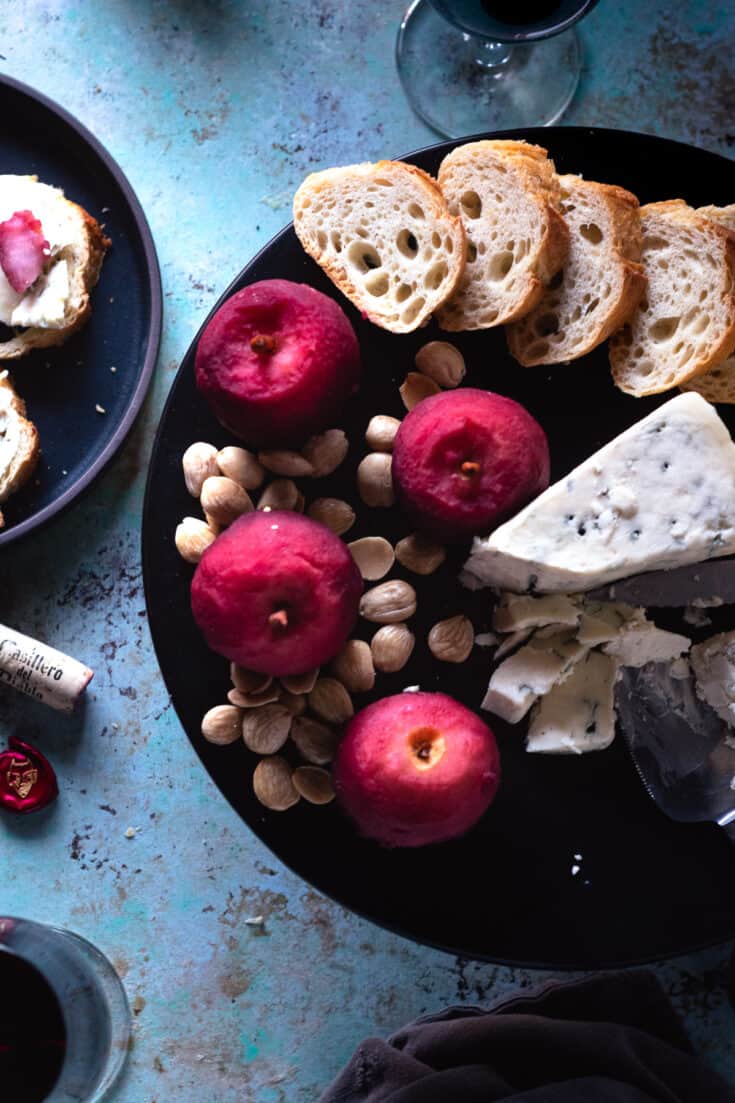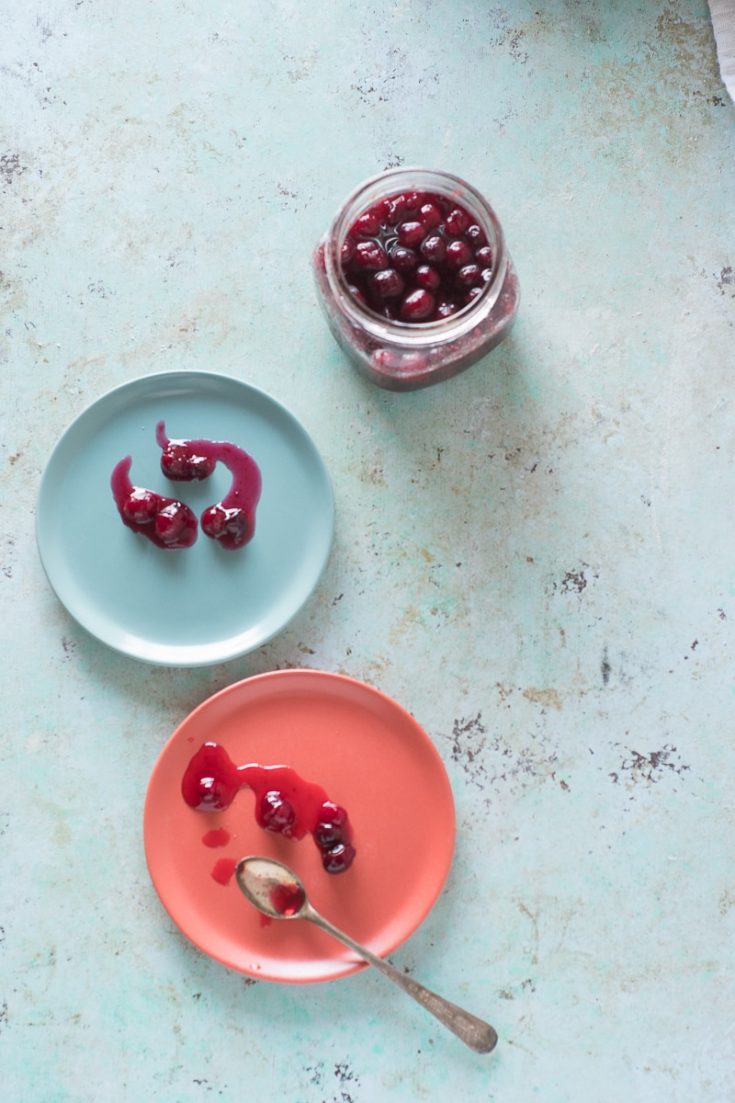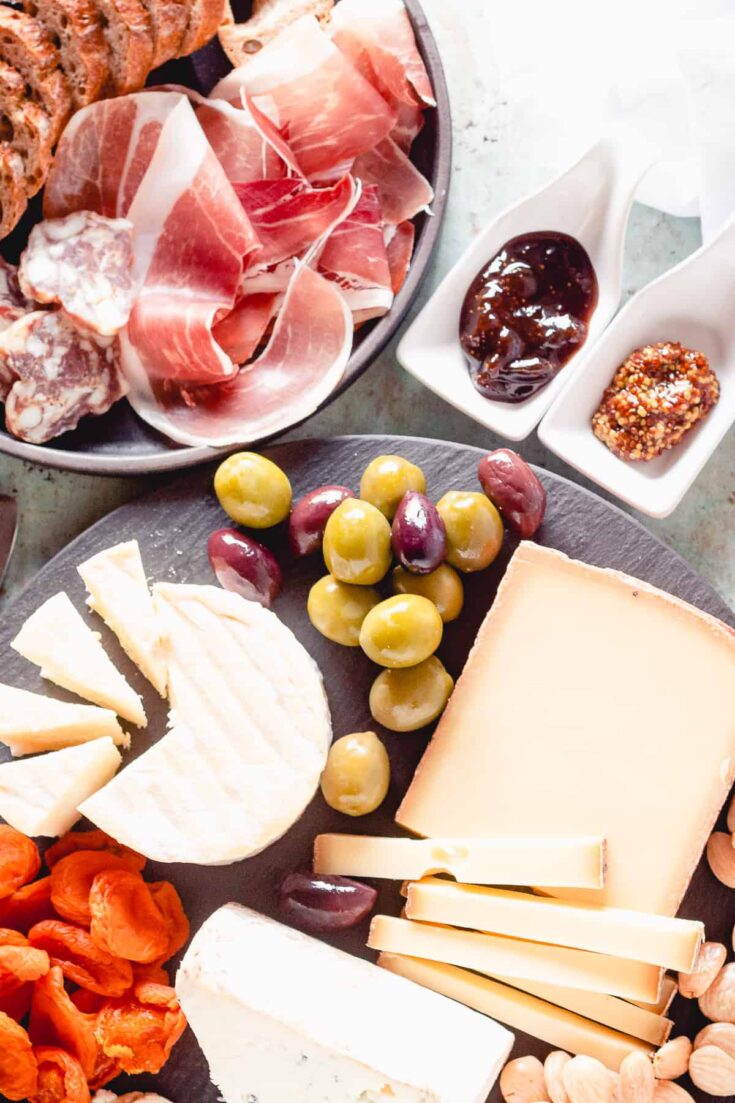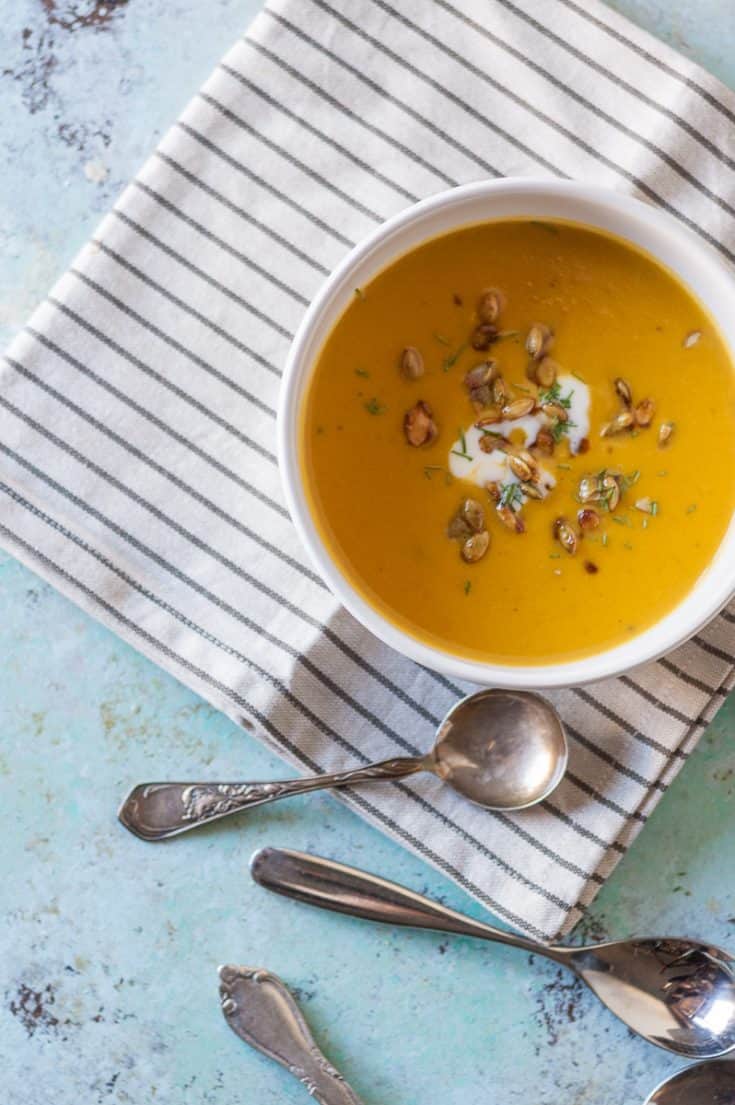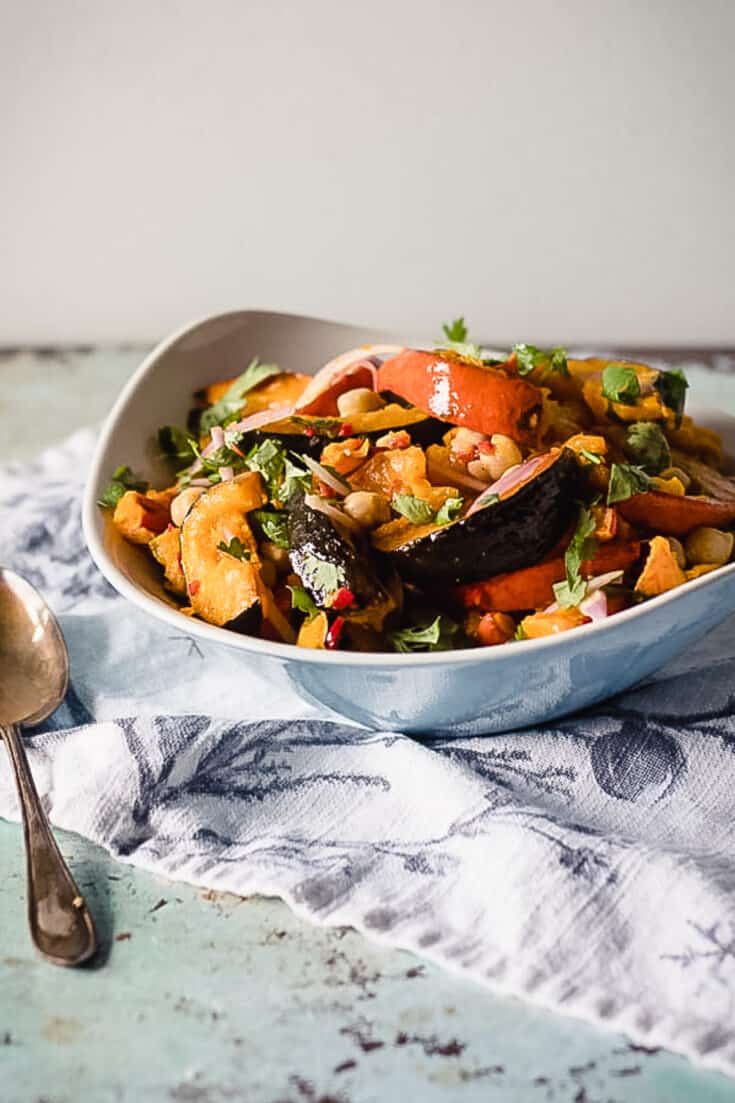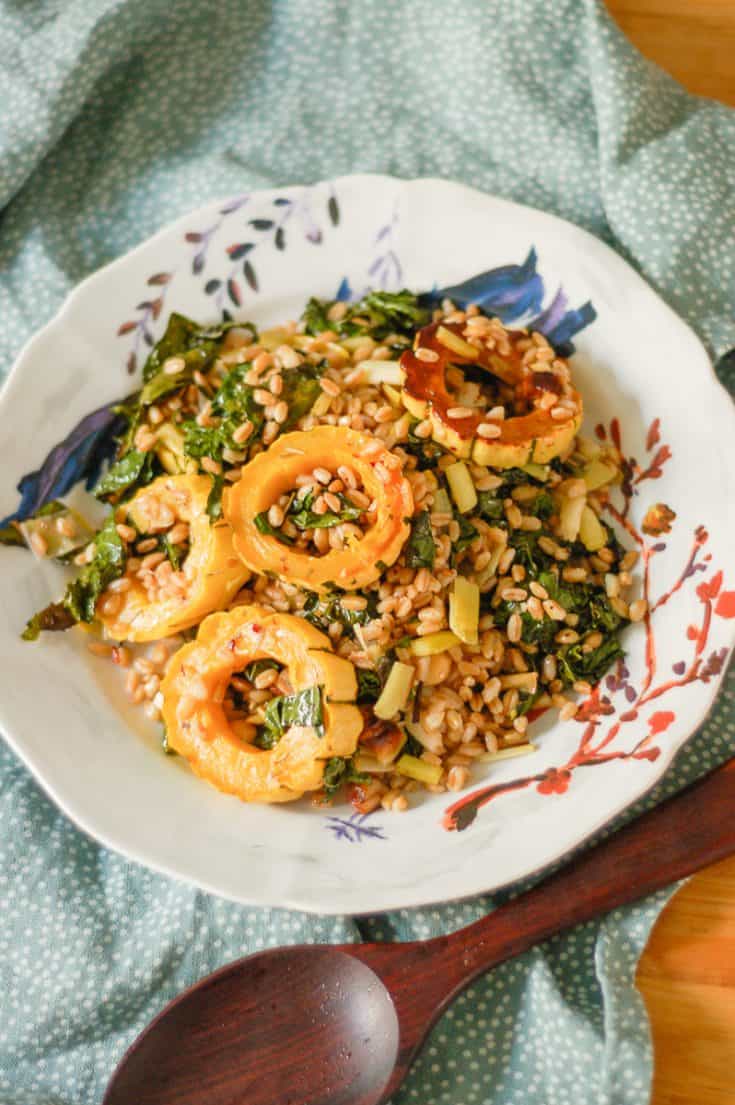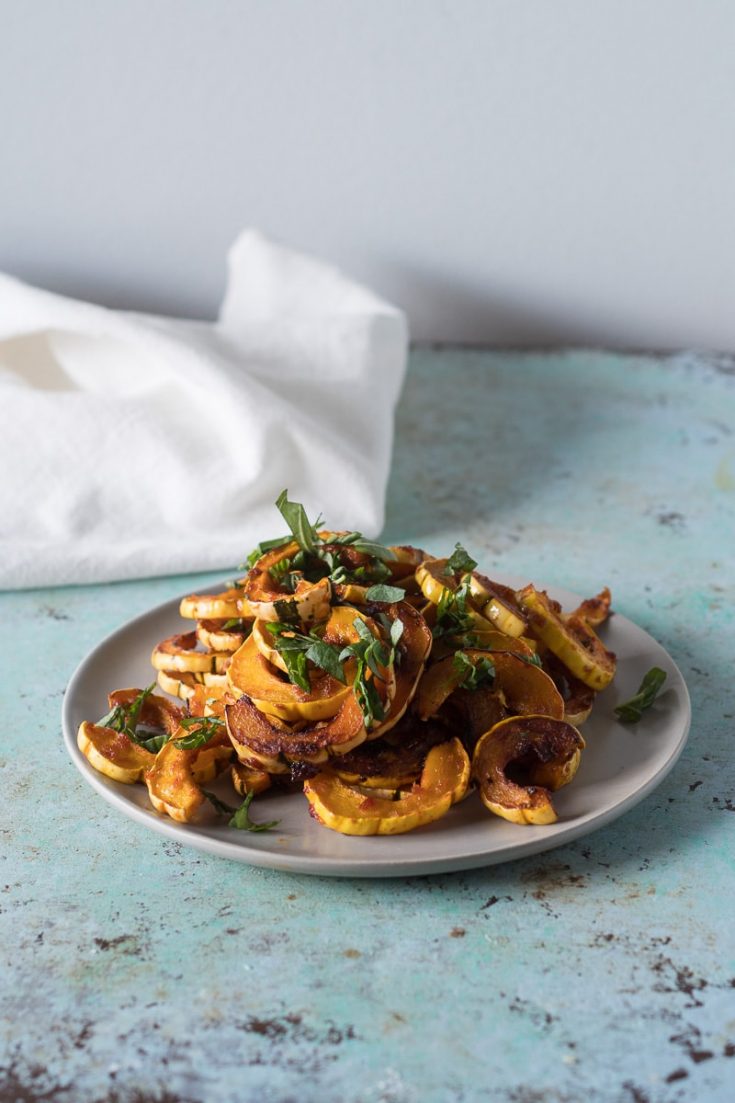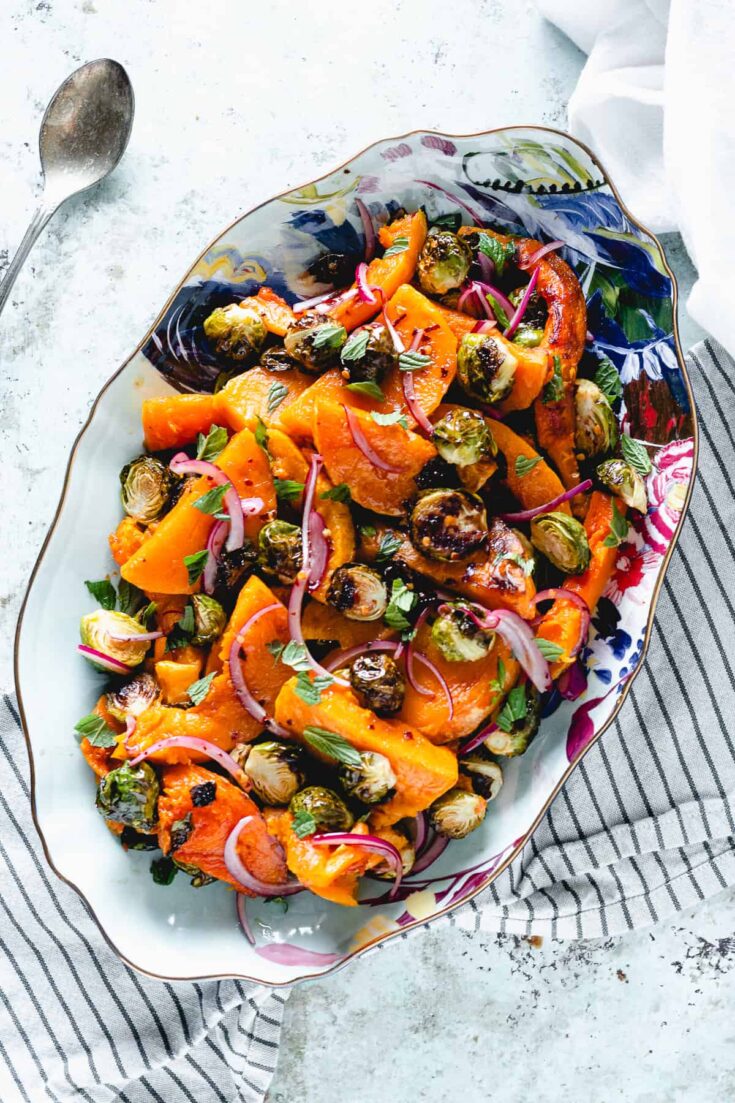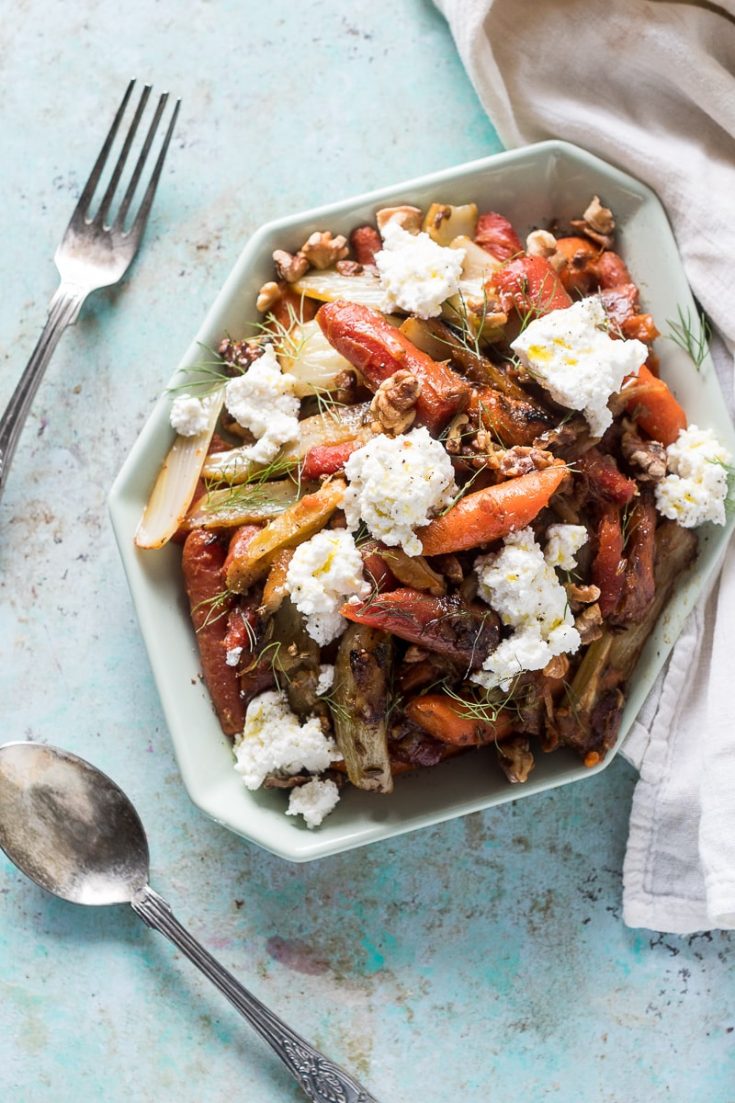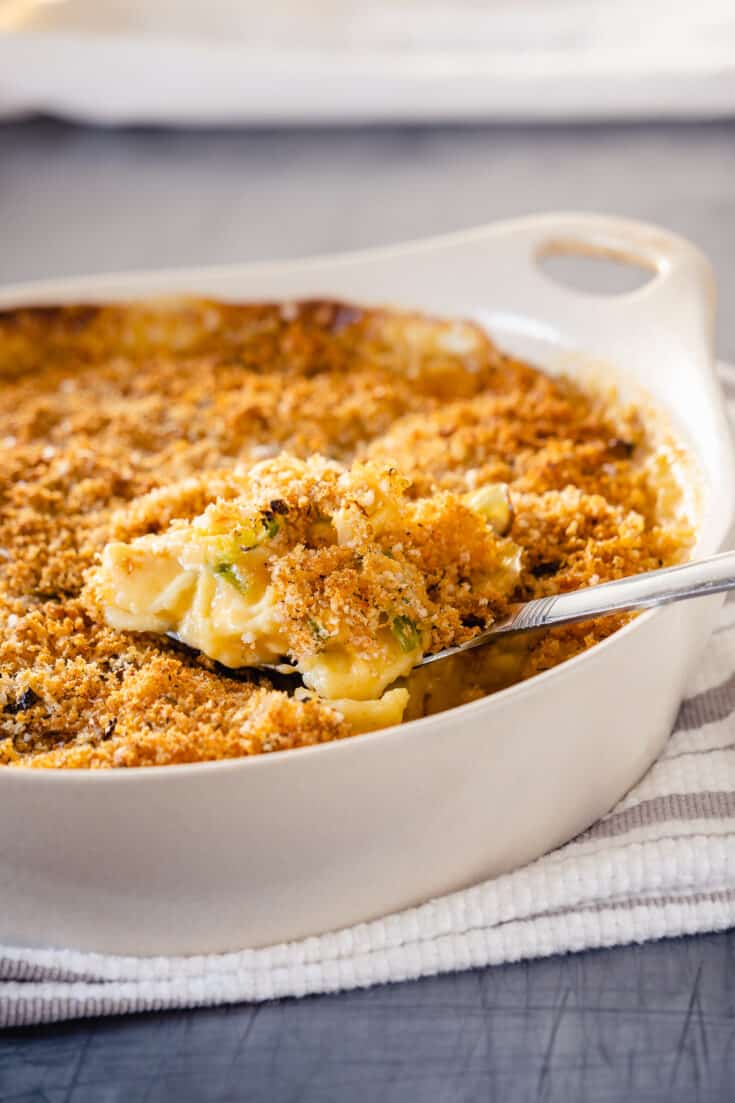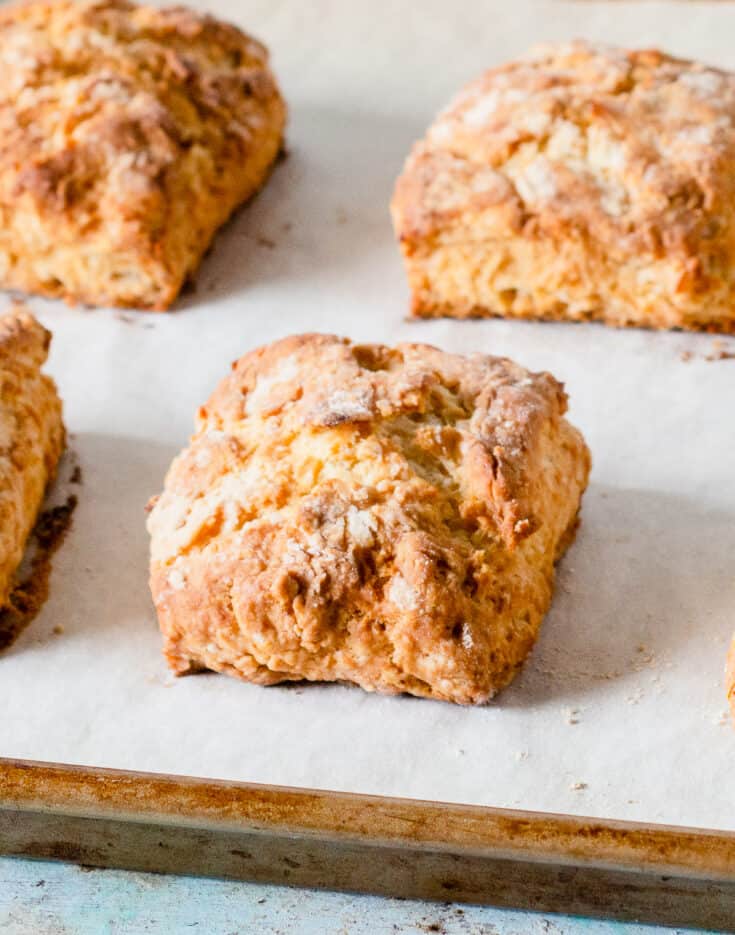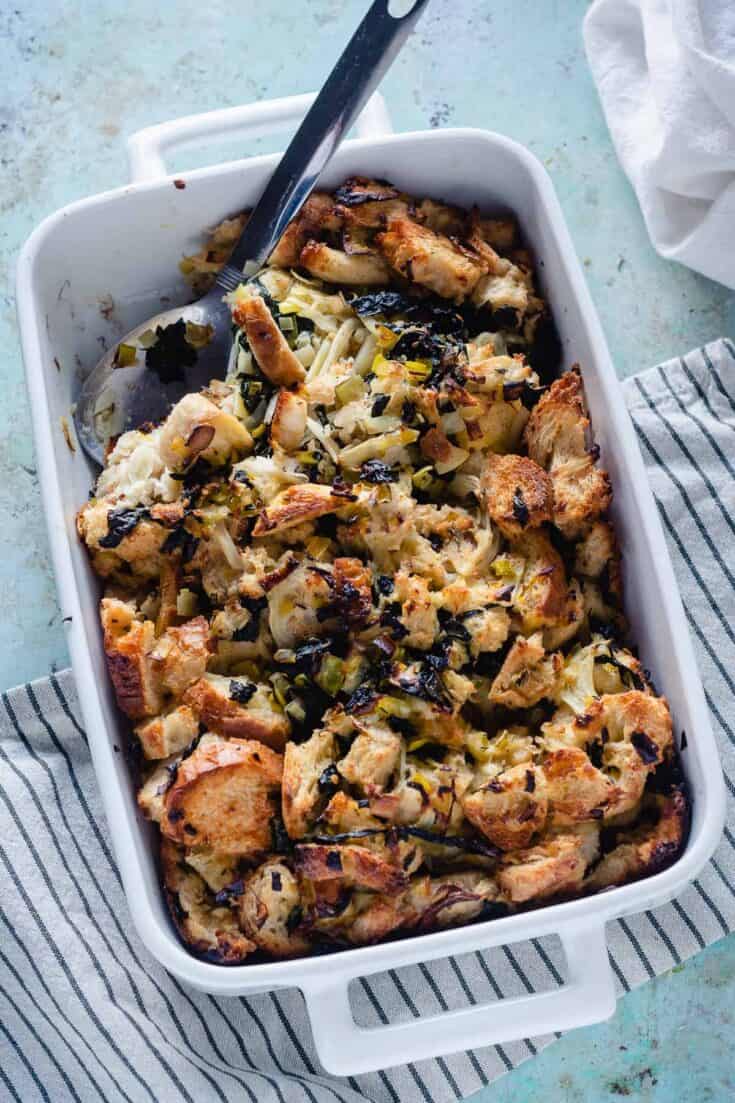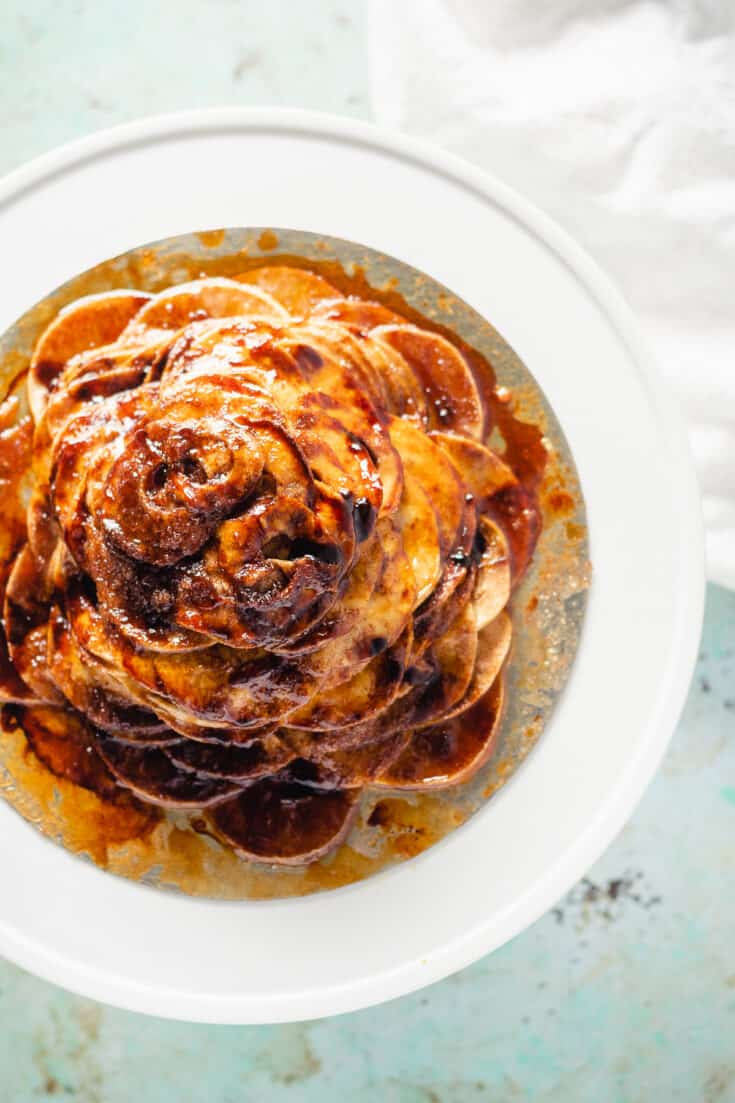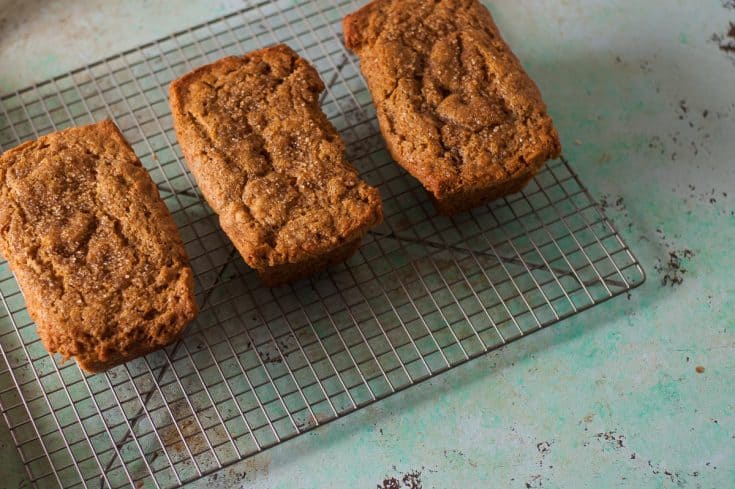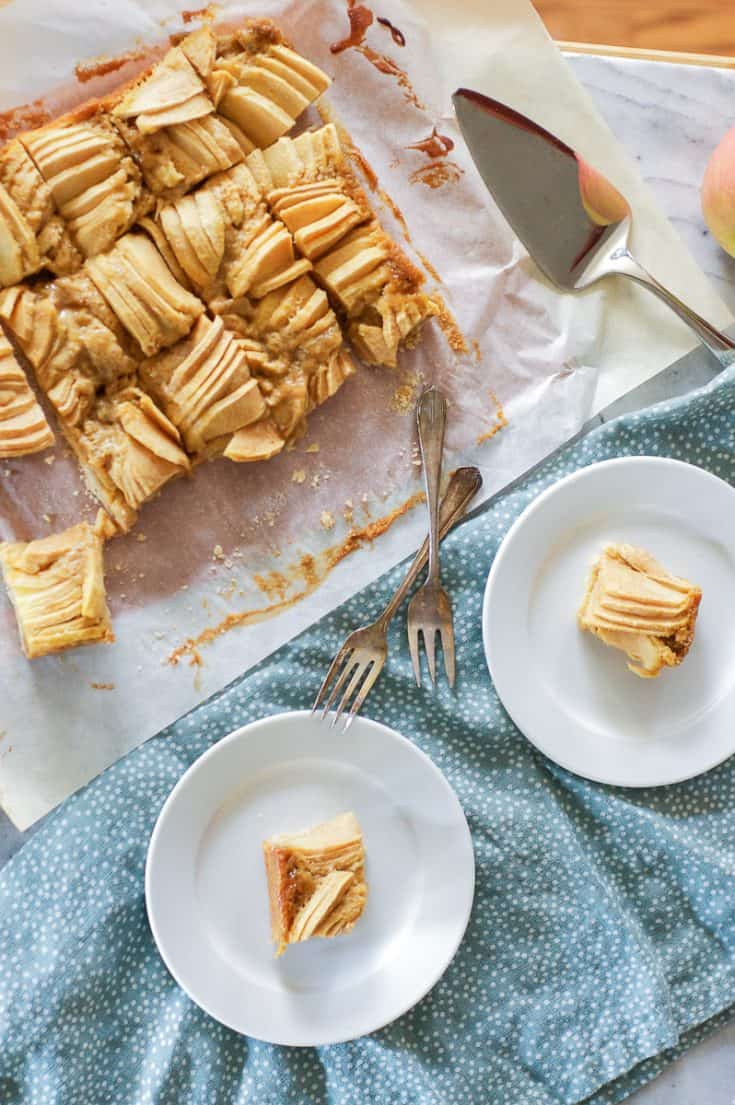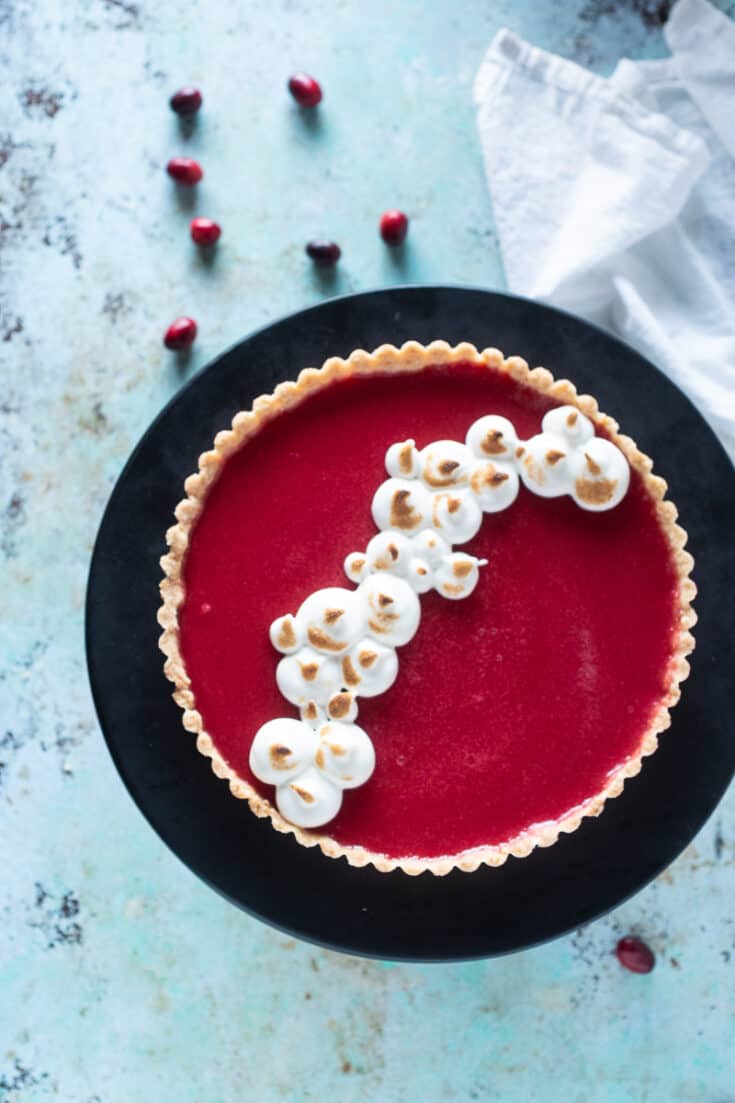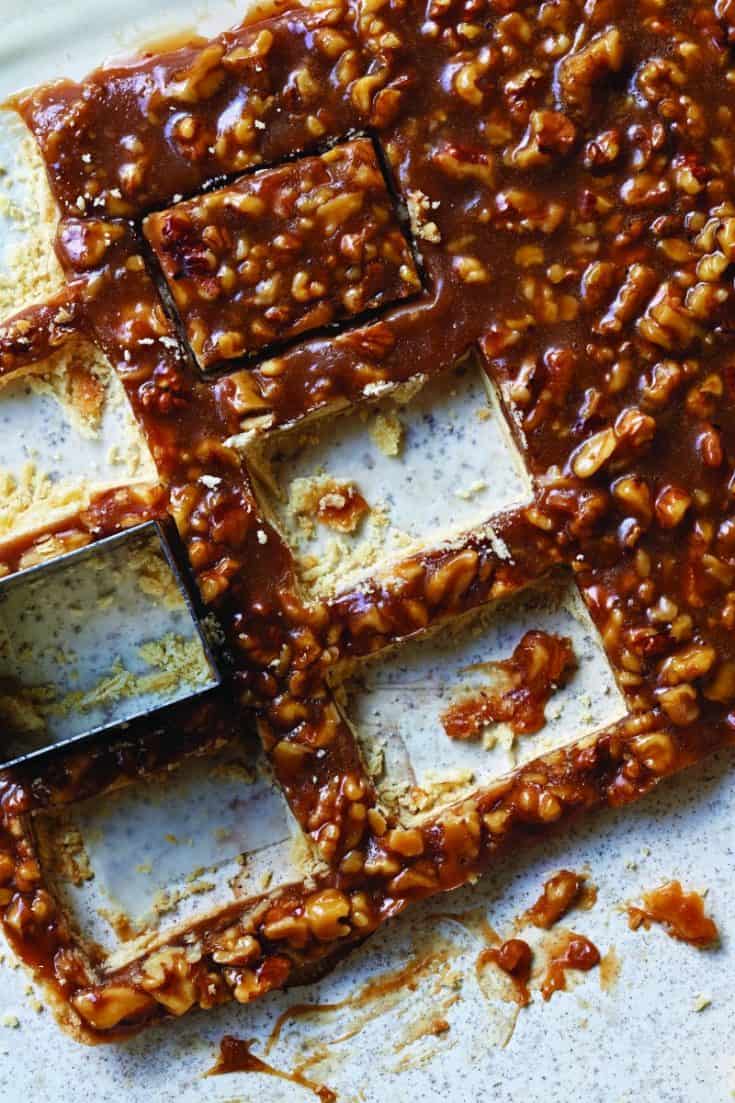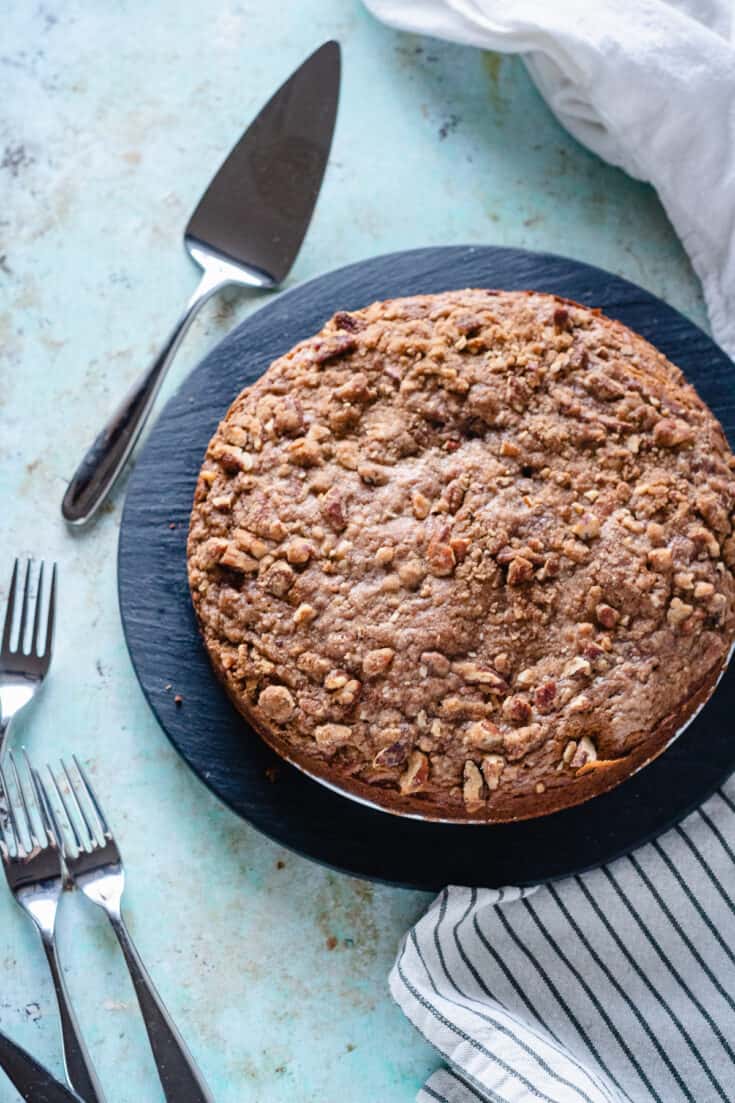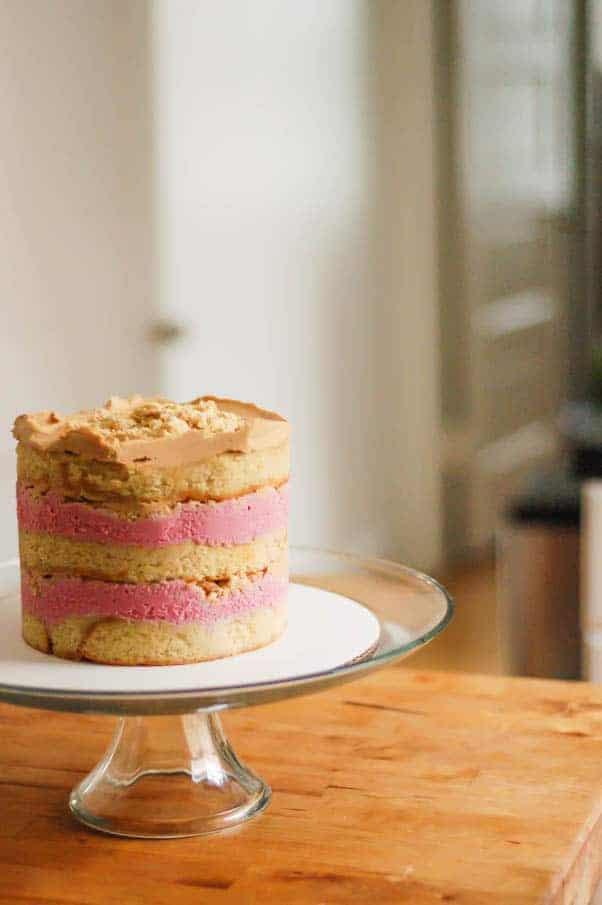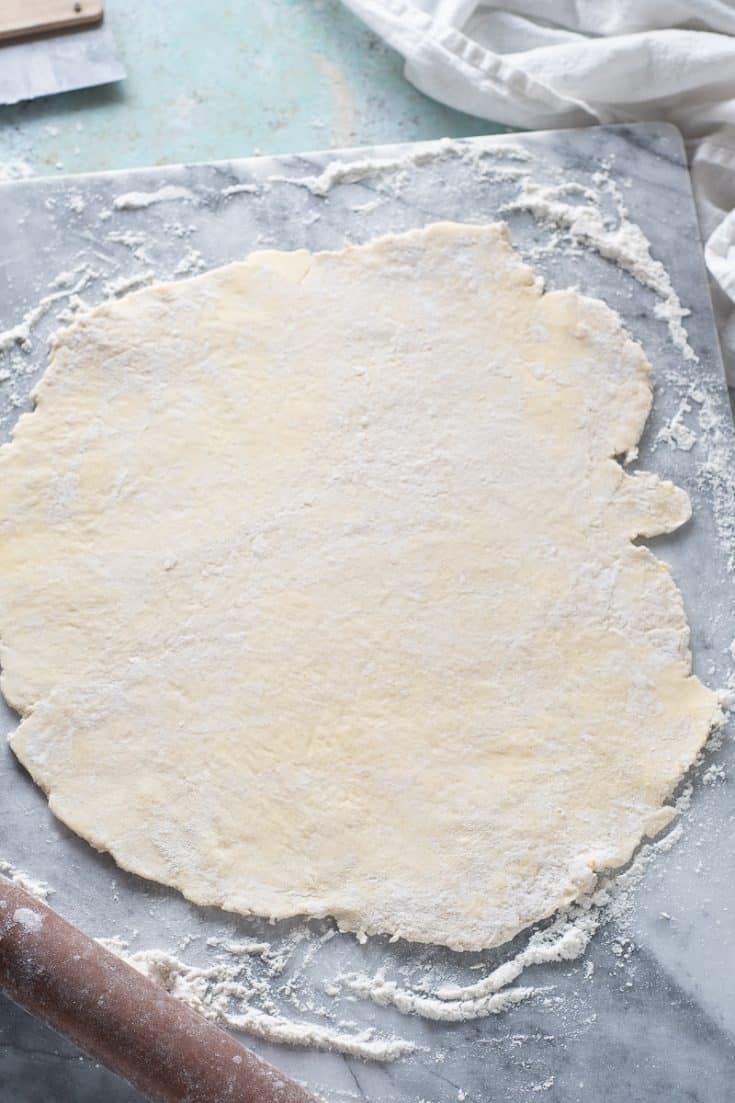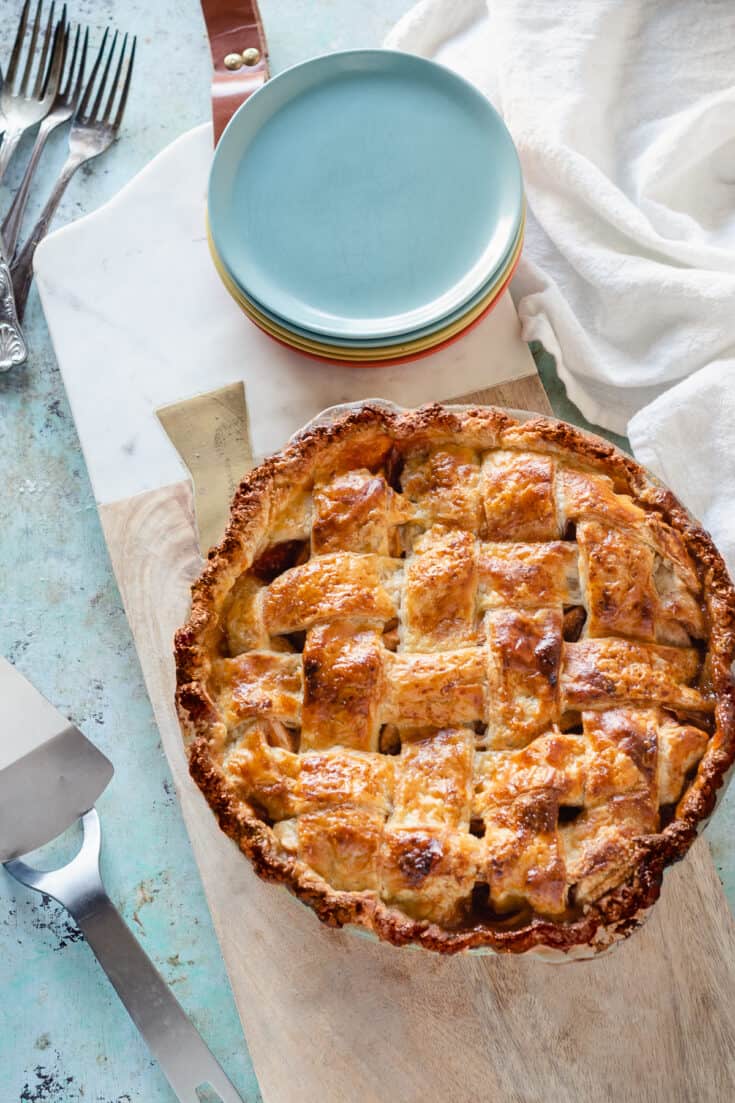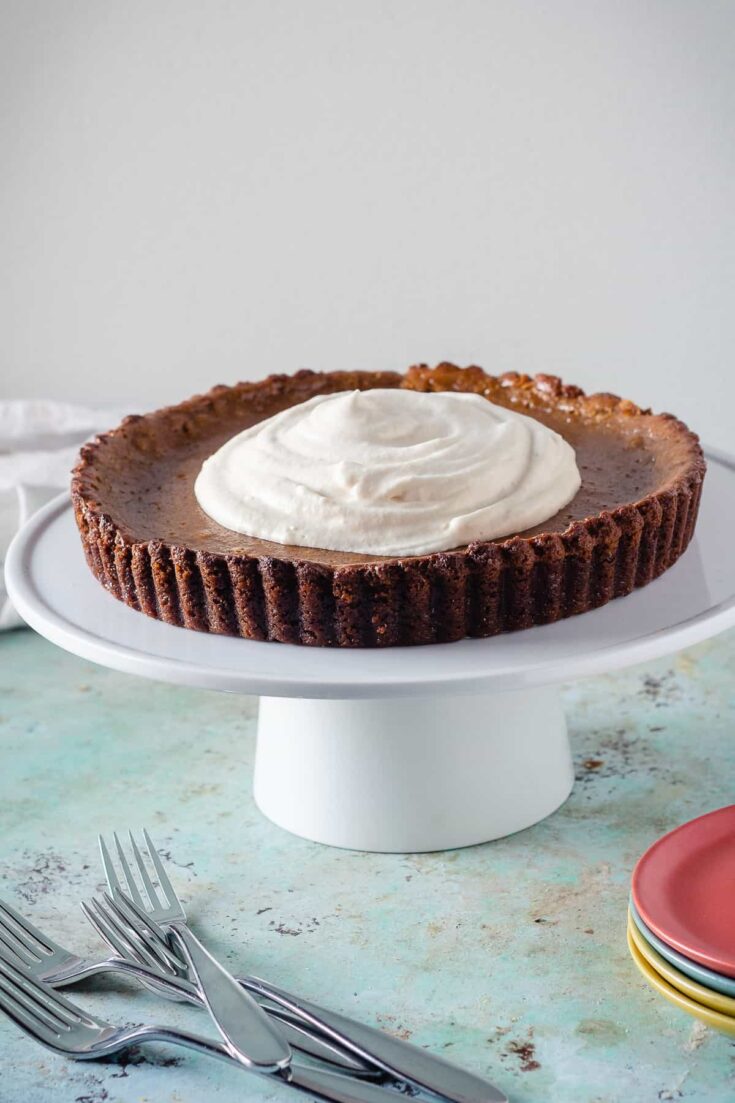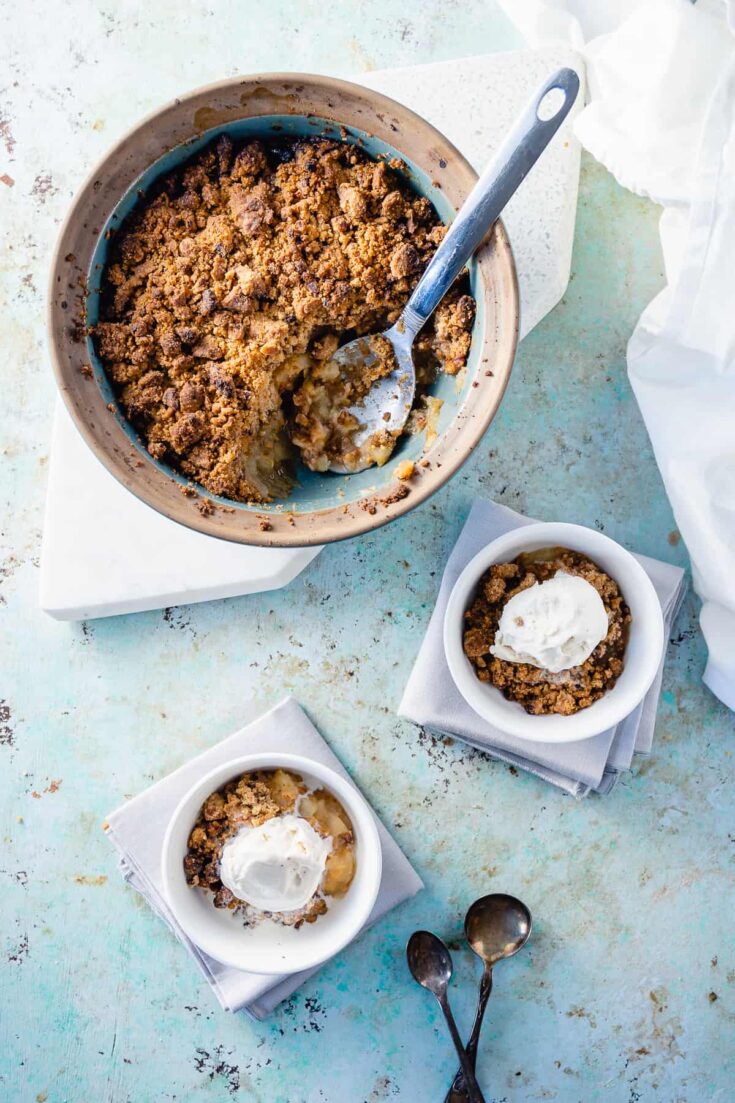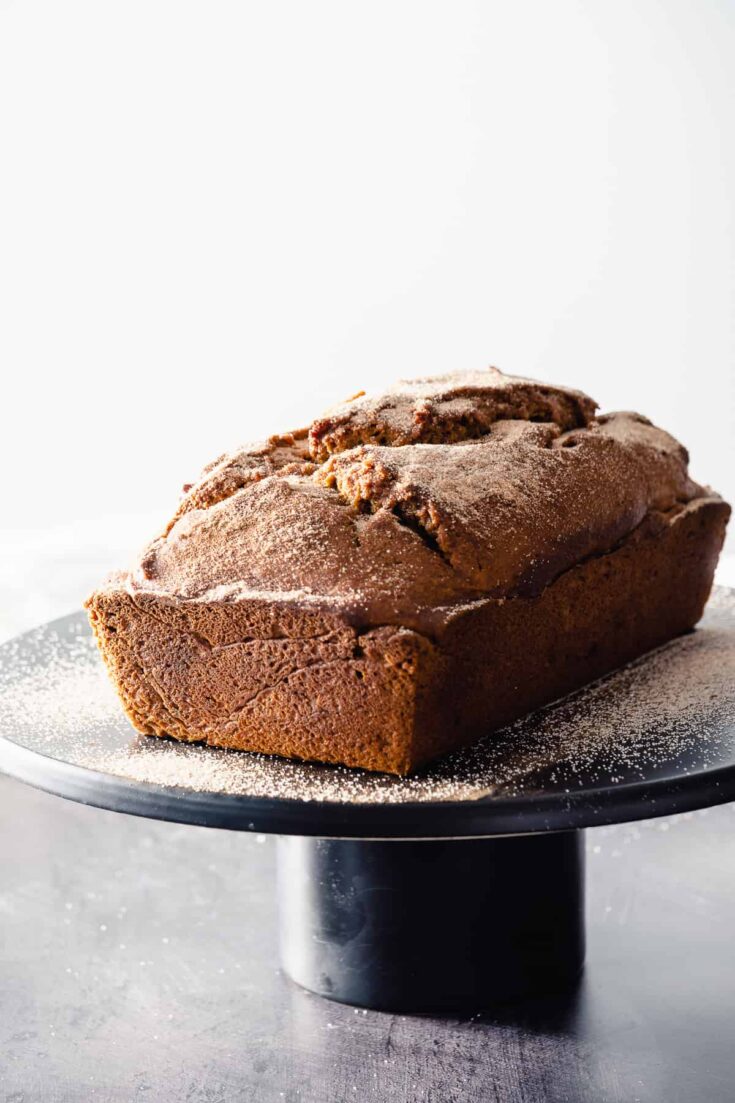I may earn from purchases through links in this post.
Thanksgiving is fast approaching! It’s one of the best food holidays of the year.
If you’re looking for inspiration, here are some of my favorite delicious recipes for Thanksgiving.
These are a mix of appetizers, side dishes, and desserts. They include dishes that work for people with special diets, be they vegetarian, vegan, or gluten free, so everyone at your table can find something to enjoy.
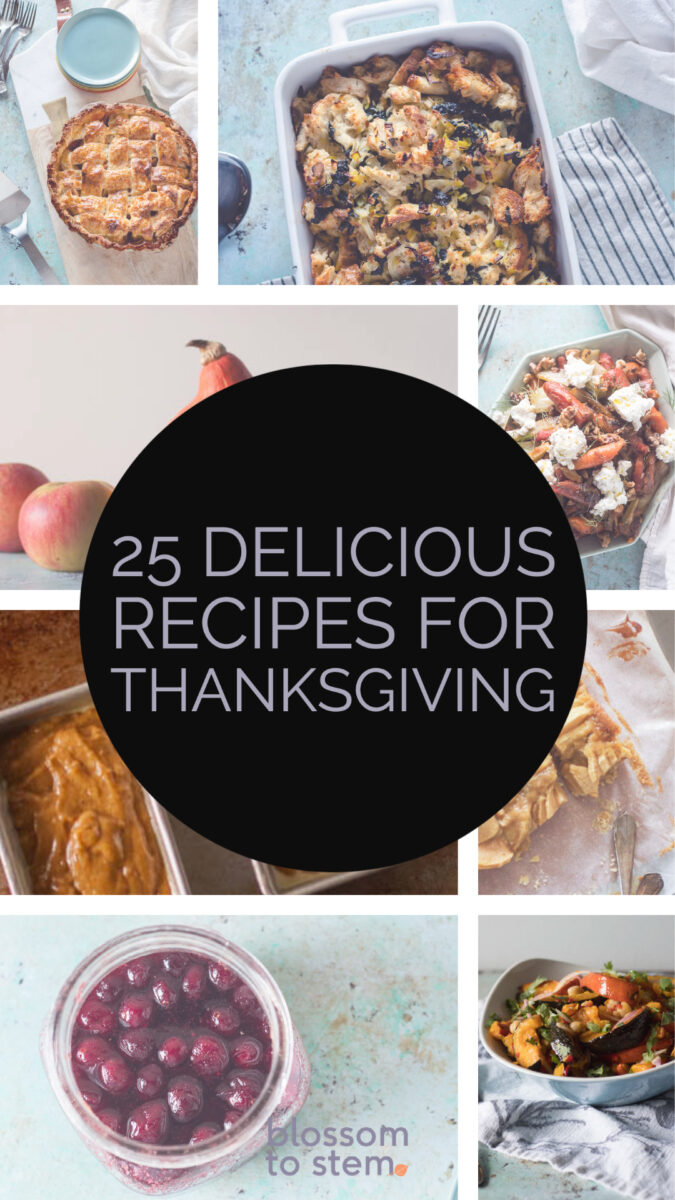
While these aren’t the most traditional Thanksgiving recipes out there, they still rely on classic fall flavors—lots of apples and squash and cranberries. And they’ll all be welcome on a Thanksgiving table.
So without further ado: onto the recipes.
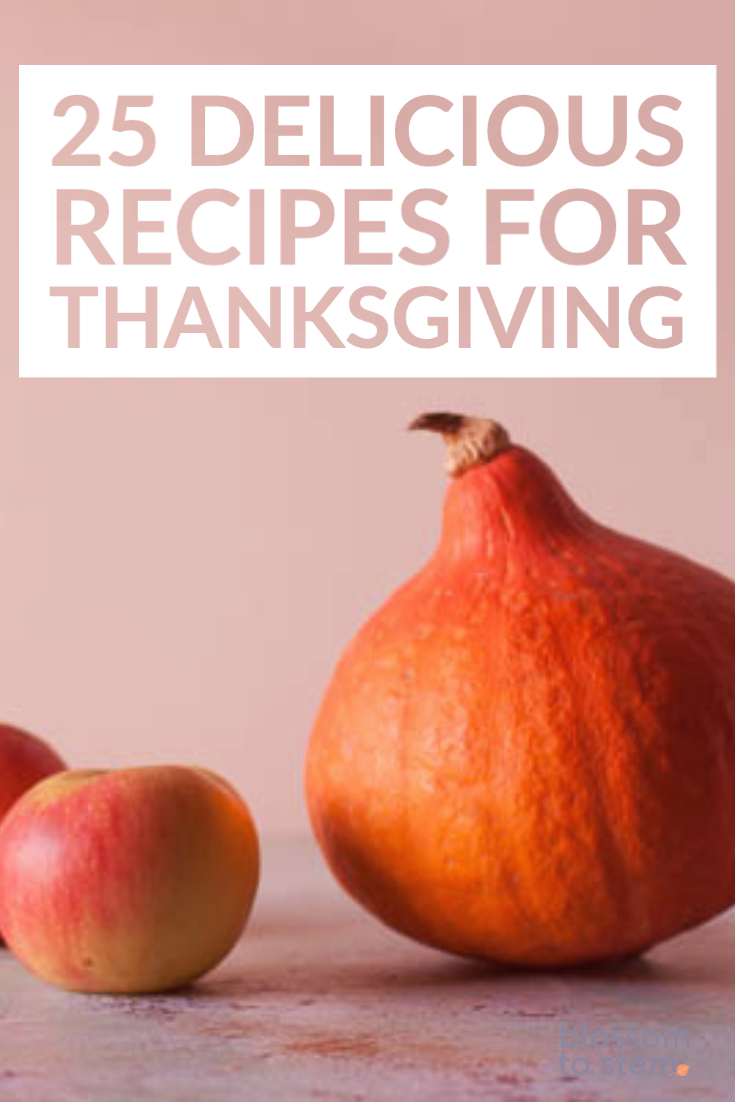
Thanksgiving Recipes
Here is a collection of some of my favorite Thanksgiving recipes. There's no turkey recipe here, but there are plenty of creative appetizers, vegetable side dishes, vegetarian and vegan main dishes, gluten free options, and beautiful desserts!
Make-ahead Appetizers
These Cranberry Lapsang Poached Apples are a great appetizer to put out for when guests arrive. They're beautiful, smoky, sophisticated, and great on a cheese plate. These spiced cranberries are incredibly versatile. They work as a variation on cranberry sauce, but they also pair beautifully with cheese (and if you wanted, you could save them for dessert and serve them over ice cream).
These poached apples are smoky and sweet with ginger and allspice. Cranberry juice brings out their tartness and turns them a gorgeous dark red color. They work well as an appetizer paired with rich cheeses on toast, but they also make a sophisticated dessert paired with vanilla or caramel ice cream. They are easy to make ahead of time and keep well in the refrigerator for several days.
These cranberries are more than the sum of their simple parts. They are excellent on oatmeal, in yogurt, as a topping for pancakes, waffles, or french toast. They are also wonderful with cheese. You can use fresh or frozen cranberries here. I always buy an extra bag or two of fresh cranberries to stash in the freezer to have on hand for times like these. I like to make these with raw cane sugar, which adds a little more complexity than white sugar, but whatever granulated sugar you have on hand will be fine. If you are comfortable with water bath canning, feel free to do that with these. They should be processed for five minutes and will keep for a year. If not, you can just jar them and store them in the refrigerator where they’ll keep for several weeks.
Here's a guide on how to put together a great cheese and charcuterie board.
Vegetable Sides (& Vegetarian Mains)
Here are some creative vegetable side dishes.
I love the way this soup balances sweet squash and tart apples. It’s a marriage of two of fall’s most iconic vegetables and fruits, and it really works. Use any orange-fleshed winter squash you like. Red kuri is one of my favorites, and it’s what I used here, but butternut, Kabocha, delicata, acorn, carnival would all be good here as well. Choose a tart apple for this–empire was my choice. This can be made with either chicken or vegetable stock, and it’s vegetarian if you use the latter (I’ve had good experience with the Swanson brand for both chicken and vegetable stock). I highly recommend making the spicy maple pepitas–they add a great crunchy texture to the soup. This soup is gluten free as is. If you avoid dairy, you could swap in olive oil for the butter, coconut milk for the half and half, and skip the creme fraiche garnish (then the soup would be vegan). This calls for 5-6 cups of stock. I know most stock comes in 4-cup packages–feel free to use 4 cups of stock and add water for the rest of the liquid. This freezes well, but squash soup that’s been frozen tends to think out a little after it thaws. If you plan to freeze this, make it slightly thicker than you want it so you have the right texture later. Oh, and while you can do this in a standing blender, it’s so much easier with a stick blender.
This recipe comes together in about a half hour. The hardest part is chopping the squash. Use a sturdy, sharp chef's knife and thoroughly dry your hands to avoid slippage. I like to use squash like kabocha and red kuri, which have a slightly richer and nuttier flavor than more widely available winter squash--if you see some at the market snatch them up--but acorn squash works as well. I like to grate the garlic for this with a microplane , which turns it into a nearly smooth pulp, but you can also use a garlic press or mash it with salt and a knife. I get better yield when I juice limes with a squeezer like this. This is good warm or at room temperature. It holds up well as leftovers for a day or two, but should be gently reheated or brought to room temperature before serving.
This grain salad hits my favorite sweet, salty and spicy buttons. It would be right at home on a Thanksgiving table as a side dish that can also work as a vegetarian or vegan main dish. I could imagine a gluten free version of this with a wild rice blend in place of the farro. I love this with delicata squash and lacinato kale, but you could use any varieties of winter squash or kale you like. If you have trouble finding marcona almonds try substituting toasted pine nuts. I like roasting the squash and kale together on opposite ends of a half sheet pan and the leeks in a separate quarter sheet pan, which allows everything the space to roast without steaming and makes it easy to pull them out if one of the vegetables is done before the others. The pans also manage to fit side-by-side on the same rack in a standard oven, which is especially nice if you’re making this for Thanksgiving when oven space tends to be scarce. This is lovely warm or at room temperature. It can also be made a day ahead of time and refrigerated overnight, but it should be removed from the refrigerator and brought to room temperature before serving.
Gochujang is a delightful Korean hot pepper paste. It's thicker, sweeter, and more umami-packed than something like sriracha or sambal oelek (which won't work as substitutes here). You can use any winter squash you like. Delicata is nice because two of them are the perfect size to fill a half sheet pan and they don't need to be peeled, but a medium butternut squash or equivalent amount of Kabocha, acorn, carnival or similar squash will work here. If your winter basil is looking too sad, you can top it with thinly sliced cilantro or scallions instead.
This dish takes a simple head of savoy cabbage and transforms it into something tender and rich and savory and delicious. I wouldn’t substitute green or red cabbage here, savoy is more delicate both in texture and flavor than the other two. I have made this with both chicken and vegetable stock and it’s excellent either way. It’s vegetarian if you make it with vegetable stock; it’s a bit richer with chicken stock. For the cheese, Stevens uses Saint Marcellin, which comes in little individual rounds. I’ve made this with the much easier to find (and cheaper) Saint Andre, and one of my favorite soft cheeses Delice de Bourgogne and it’s been wonderful both ways. Don’t be intimidated by the fancy French cheese names. What you want is a soft, triple cream style of cheese, like Brie or Camembert but with more complex flavor. There are plenty of options out there, but I know that what’s available at any given grocery store varies widely. I think the most widely available cheese in this style is Saint Andre, which I have seen at Trader Joe’s and at our local Jewel. We usually eat this as a light main dish, but it would also be lovely as a vegetable side. As a main, it’s nice with a hunk of crusty bread.
The red wine vinegar and olive oil and pickled onions and crushed red pepper bring a wallop of acidity and crunch and gentle heat to this dish.
The vegetables get roasted until the butternut squash is browned and soft and the Brussels sprouts are tender with crispy edges and outer leaves.
You could substitute any winter squash here for the butternut.
This simple side dish highlights the natural sweetness in carrots and fennel, which play particularly well together. They get cooked in a pressure cooker or Instant Pot in a few minutes (if you don't have one you could cook them in a covered pot over low heat for about 45 minutes). For the best results go with the best, freshest ricotta you can get your hands on or try making your own (it's easy). I like this alongside just about any protein, it also makes a lovely light vegetarian meal tossed with cooked farro.
This mac and cheese uses a no-boil technique with the pasta. You soak the pasta in cool water to allow it to hydrate before it gets added to the sauce and finishes cooking in the oven.
The Brussels sprouts roast in the oven that is already heated to bake the mac and cheese. And meanwhile you make the cheese sauce, which starts with a traditional béchamel. I call for sharp cheddar here, but you can use a combination of gruyere, fontina, gouda or any semi-firm cheese. Don't use pre-shredded cheese in this—it has additives that interfere with smooth melting and will result in a clumpy sauce.
This bakes in a 2-quart baking dish such as an 8- or 9-inch square baking dish or a 10-inch round casserole. You can double it and make it in a 9"x13" pan for a crowd.
Bready Stuff
Buttermilk biscuits are a great thing to have on a Thanksgiving table. These biscuits are flaky, light, and easy to make. This fennel and kale stuffing is crispy on the edges and soft in the middle.
These buttermilk biscuits are light and flaky and buttery. I prefer to use an all-purpose flour with a mid-range protein content like Gold Medal for these biscuits. Avoid a higher protein all-purpose flour like King Arthur, which will result in biscuits that aren't quite as tender. (And southerners, I'm sorry to say I don't have easy access to White Lily, so I don't know how this particular recipe works with that, but if you try it, do report back!) Avoid buttermilk substitutes for these biscuits—it's essential for the flavor—but if you must use something else kefir is the next best option. This is also designed to work with American-style unsalted butter (higher fat European butters will cause these to spread more and not rise up so beautifully).
This fennel and kale stuffing is crisp around the edges and soft in the middle.
It doesn't require any fancy bread—anything vaguely country-style or Italian bread will work. It gets flavor from olive oil, leeks, shallots, garlic and a generous amount of fennel seed.
I like to use Tuscan kale (also called lacinato or dinosaur kale) here because I love its tender texture, but curly kale works beautifully as well. The fennel gets soft and brings a welcome gentle note to the dish.
This is vegetarian if made with vegetable broth.
Desserts (beyond pumpkin pie)
There's apples, pumpkins, nuts, and lots of warm baking spices here.
This dessert is incredibly simple: just carefully layered slices of apples brushed with butter and sprinkled with cinnamon and sugar arranged in a dome that looks a bit like a beehive. But the flavor is incredibly complex. I couldn't resist tweaking Prueitt's version a little. I browned the butter because apples and brown butter are delightful together, but you can skip that step and just use melted butter if you prefer. I also reduced the sugar a bit--from 3/4 of a cup to 2/3 of a cup--because that felt like plenty. You'll want to use an apple that doesn't turn to mush in the oven. Prueitt calls for Granny Smith's; I like it with Empires. I used an apple corer like the one linked below to remove the cores, and my favorite peelers are also linked below. If you don't have a corer, feel free to peel and slice the apples in any way that preserves their lovely round edges. The apple jelly gives the beehive its lovely shine, but you could leave it off if you don't want to bother--the flavor won't suffer.
This pumpkin tea cake is generous with the spices and full of those warm baking spice flavors. I ask that you please freshly grate the nutmeg for this (get whole nutmeg and use a microplane). It makes a difference. I usually eyeball the nutmeg because grating it into any kind of measuring container is a pain and it doesn’t weigh enough for most scales to accurately register. Usually, I try to use about 2/3 of a whole nutmeg. I made this batch in mini loaf pans that I got from King Arthur Flour. I usually make it in a standard loaf pan, and the instructions I’m giving will be for that. (If you use small loaf pans, they take about 45 minutes to bake.)
These brown butter apple bars occupy the space between a tart and a cookie. Their base is one of my all time favorite shortbread crusts, that’s buttery, crisp, easy and has never let me down. You can brown the butter for the crust as well if you want more of that nutty brown butter flavor. The brown butter custard layer is infused with a cinnamon stick and has caramel-molasses notes from the brown sugar. When most home cooks need to slice apples, they start by slicing them down the middle through the core and then quarter them and remove the core from each wedge. One thing I’ve observed through watching many chefs in action is that most professionals slice apples by cutting the apple on each side close to the core leaving a square core and four pieces of apple that are easy to slice. Not surprisingly, the professional way is more efficient, and it’s the method I recommend for slicing the apples for this recipe. You can use any firm baking apple you like for these. I used Fuji apples here. These are best the day they are made, but can keep well in the refrigerator for a couple of days.
This cranberry curd tart uses a press-in shortbread crust inspired by one Alice Medrich uses in everything. This one has a bit of orange zest and powdered sugar to keep it tender. The cranberry curd itself is a riff on one I've been making for years that's rounded out with a generous splash of vanilla, some freshly squeezed orange juice from the orange you just zested, and an optional splash of any orange liqueur you like (but don't bother going out to buy Grand Marnier or Dry Curacao just for this). The tart crust can be made and baked up to two days ahead, and the curd can be cooked and chilled up to a week in advance, you can then assemble and bake the tart on the day (or day before) you want to eat it. The meringue is totally optional, but because the tart leaves you with extra egg whites from the curd, it's easy to go that extra step and add the meringue. The amount of meringue isn't as much what you would typically do for a towering lemon meringue pie, but it's plenty for piping decoratively on the top (and enough to cover the whole top with dots like you see pictured if you wanted to do that). You'll need a 9-inch tart pan with a removable bottom for this recipe.
THIS IS MY OFFICIAL barter recipe. If I ask anyone for a recipe, I hand over this one in exchange. Everyone needs a good nut bar, and this one comes together quickly. The shortbread base is baked all the way through while the nut caramel iscooked on the stove and then poured onto the cooled base. After it has cooled, it’s ready to be cut. (Do not refrigeratebefore cutting or else the nut caramel becomes rock-hard.) While using a knife to cut the bars is best for yield, sometimesI punch the bars out using a rectangular cookie cutter to get a cleaner edge. Any kind of nut can be used for these bars,but honey and walnuts are naturals together.
This pumpkin coffee cake has a tender crumb, a generous mix of autumnal spices, and two layers of brown sugar pecan streusel.
It slices beautifully, travels well, and keeps for several days, which make it versatile.
I love this cake for breakfast alongside a mug of coffee, but it also works beautifully for dessert.
This is my take on a Momofuku Milk Bar cake. The cake and the method are Tosi’s (she’s really the genius here), but the fillings and flavor combinations are mine. This is a big project and needs to be started at least a day before you want to serve it, but all of the components except for the frosting can be made a few days ahead of time, and the fully assembled cake keeps in the freezer for up to two weeks. So you have plenty of flexibility in getting it ready for a special occasion. I had leftover orange cardamom crumbs, but I would layer them on even more densely if I made it again. I love this cranberry curd and think it’s special enough to consider doubling just to have leftovers. This method of making curd without tempering the eggs is unorthodox, but again, the method comes from Tosi, and I’ve started making all of my fruit curds this way. If you don’t have a kitchen scale, you should really think about getting one. Grams are so much more precise than cups and tablespoons. I’ve provided measurements for both weights and volume, but you’ll get more consistent results if you weigh everything.
The crust has a higher ratio of butter to flour than many pie crusts, which makes it extra flaky. This recipe works best with American butter and not higher fat European butters.
It's a simple and forgiving dough to work with. The sugar in the dough helps with browning, but doesn't make the crust itself sweet, which makes the dough flexible enough to work with sweet or savory fillings.
This crust works well for rustic free-form galettes or intricate lattice crusts.
This apple pie is everything I look for in a classic apple pie. The crust is flaky, the filling is sturdy enough to slice but gooey enough to feel rich. It's got a mix of white and brown sugar for depth of flavor and a generous amount of cinnamon to keep the flavor profile simple and classic.
My favorite apple pies are made with a mix of apple varieties like Empires, Cortlands, Liberty, and Northern Spy. But if you are limited in what apples are available to you, Granny Smiths are a solid option.
The apples in this pie retain a bit of a firm bite. I like them that way, but if you want your apples, slice them thinner than I do here.
This caramel pumpkin tart is a spin on a traditional pumpkin pie. The caramel makes the flavor fuller and the texture lighter than the traditional version.
Don't be afraid of making caramel. Just keep an eye on it once you get started and be swift and decisive when it's time to remove it from the heat.
Don't be tempted to skip the step of straining the filling. It's essential to the lush, smooth texture of the filling.
I like to serve it with whipped cream.
This crisp is so easy to make. The topping comes together quickly and can hang out while you work on the apples
When you melt the butter, you can take the extra step of browning it for more flavor (I usually do)—it brings out the nutty flavor and is really delightful—but it's not necessary.
Feel free to play around with the spices. I love this particular combination, but you can simplify and just use cinnamon or throw in other warm baking spices like nutmeg or cloves.
Use any of your favorite baking apples here. Granny Smith, Braeburn, Mutsu, and Haralson are all good options. A combination of apple varieties works well, too.
This pumpkin bread makes a generously sized loaf. Be sure to use a loaf pan that measures at least 9"x5" around the top. If your loaf pan is smaller, reserve some of the batter to bake as muffins or a mini loaf.
This is a dense, moist, craggy-topped pumpkin bread with a generous amount of spices. You can feel free to play around with the spices, depending on your preferences and what you have around. Cinnamon is the star here, but the nutmeg, ginger, and cardamom give this a wonderful complexity.
The thing that makes this pumpkin bread extra special is that it gets brushed with butter and showered with cinnamon sugar after it comes out of the oven. You can skip the step if you want, but it's hardly any work and it's delightful.

